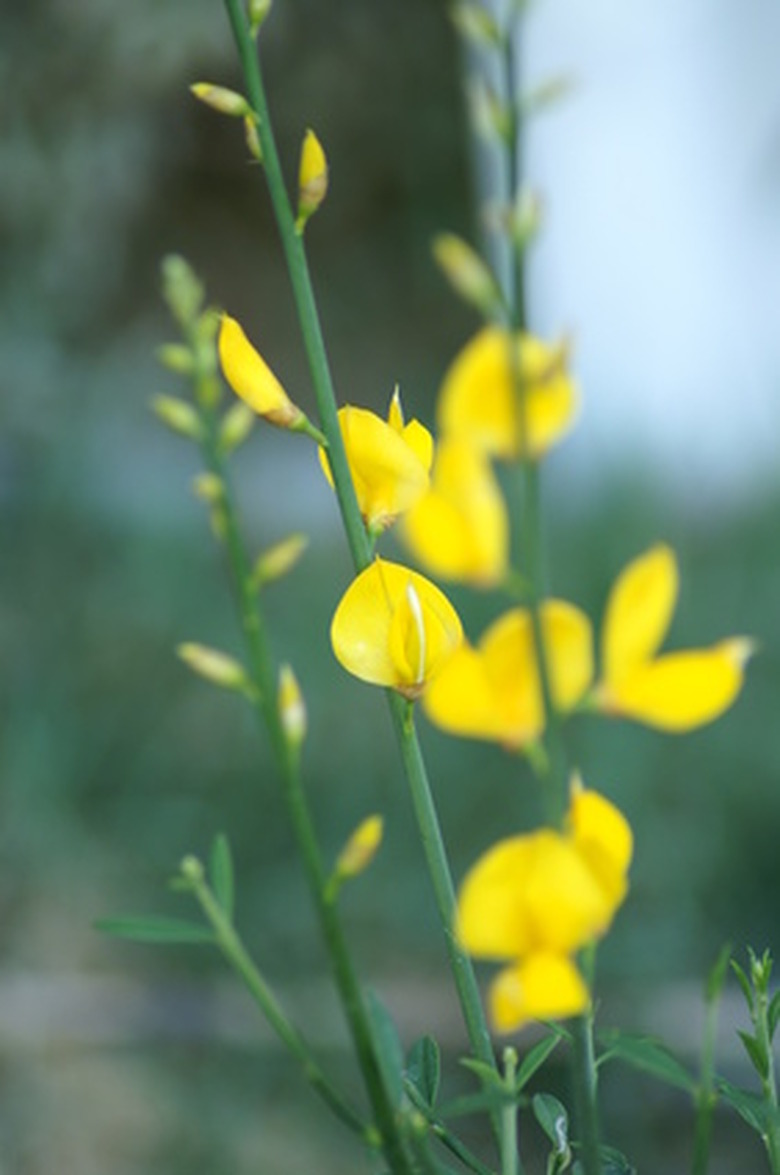How To Care For A Broom Plant
The broom plant (Cytisus scoparius) grows as a hardy, deciduous flowering shrub. Thin branches arch upward, reaching maximum heights of 6 feet. In the spring, the shrub becomes covered with small, bright yellow flowers. Also known as Scotch broom, this prolific bloomer makes an attractive choice for home gardeners who want a showy, low-maintenance shrub. Unfortunately, Scotch broom also spreads rapidly and may become invasive. According to the University of Connecticut, there are more than 100 cultivars of cytisus scoparius. Purchase a hybrid if you want to grow this plant.
- The broom plant (Cytisus scoparius) grows as a hardy, deciduous flowering shrub.
- According to the University of Connecticut, there are more than 100 cultivars of cytisus scoparius.
Step 1
Expose your broom plant to a minimum of six hours of sunlight per day. The broom plant loves to flower, but it needs full sunlight to do so. Eight to 12 hours a day is ideal.
Step 2
Amend the soil if it is very wet and heavy, such as clay soil. The broom plant thrives in dry, sandy soils. Work sand into the soil to a depth of 12 inches around the broom plant.
Step 3
Water the broom plant only twice per month, and only if there is no rain. Deep, slow waterings are best. Use a soaking or drip hose to let water seep into the ground.
- Expose your broom plant to a minimum of six hours of sunlight per day.
- Work sand into the soil to a depth of 12 inches around the broom plant.
Step 4
Rake fallen leaves away from the plant in autumn. The leaves could harbor fungi, which can overwinter in the soil at the base of the plant and infect it in the spring. Adding a 2-inch layer of mulch in the fall protects the broom plant from frost heave.
Sweet Broom Plant Care
A native of the Canary Islands, sweet broom is a suitable perennial shrub for U.S. Department of Agriculture plant hardiness zones 8 through 10. According to Monrovia, sweet broom is an excellent choice for dry hillside plantings, as it tolerates some drought and has a sprawling habit that quickly covers a large area with blooms. To help the shrub establish a strong foundation, especially in an area prone to droughts, water regularly during the first growing season. Once established, sweet broom requires very little care. Watering may be reduced after the first growing season. To help give the plant a tidier look, you may want to prune or pinch off the spent flowers. Fall webworms attack in summer and early fall, eating the broom's leaves and covering the plant with grayish webs filled with droppings and small caterpillars. Pests can live over the winter in the debris. Replace the debris with fresh mulch.
- Rake fallen leaves away from the plant in autumn.
- The leaves could harbor fungi, which can overwinter in the soil at the base of the plant and infect it in the spring.
Things Needed
- Sand
- Shovel or trowel
- Soaking or drip hose
- Rake
- Mulch
